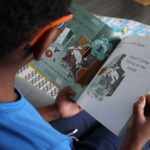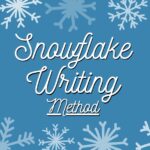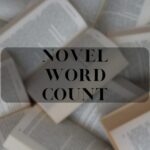Stories have been an integral part of human culture for millennia. They entertain, educate, and inspire. At the heart of every gripping tale is conflict, the driving force that propels the narrative forward and keeps readers on the edge of their seats. But how exactly do conflicts influence the plot?
The Essence of Conflict
Conflict is not just about physical battles or arguments; it’s the essence of drama and tension in a story. Without it, a narrative can feel flat and uneventful.
Internal vs. External Conflicts
- Every story is a dance between internal and external conflicts. Internal conflicts are the struggles within a character’s mind, such as moral dilemmas or personal insecurities. These battles can be as captivating as any external clash.
The best example of an internal conflict is the famous “To be, or not to be” from Hamlet, where he contemplates the nature of existence and grapples with thoughts of suicide, questioning whether it’s better to endure life’s hardships or to end one’s suffering through death.
- External conflicts, on the other hand, are the challenges posed by the outside world. These can range from a villain’s schemes to natural disasters. Both types of conflicts are crucial for a well-rounded story.
The Role of Antagonists
- Antagonists are not just villains; they are the embodiment of conflict. They challenge the protagonist, forcing them to grow and adapt.
- A well-developed antagonist does more than just oppose the hero. They reflect the story’s themes and often have their compelling motivations.
How Conflicts Drive the Plot
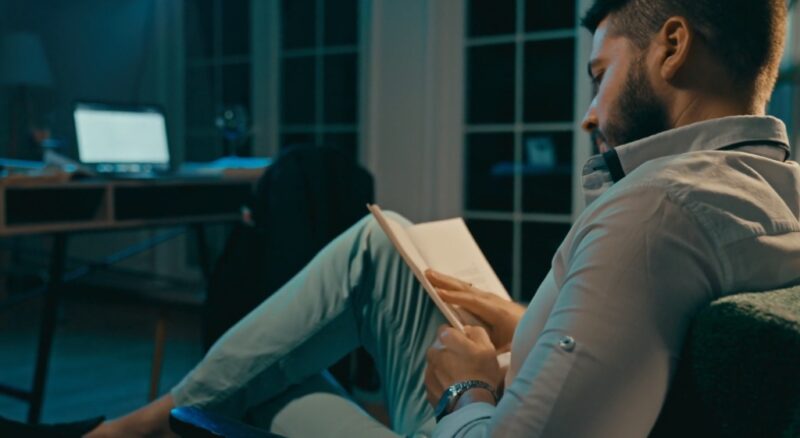
Conflicts are the engine of the plot. They introduce obstacles that characters must overcome, leading to growth and change.
Setting the Stakes
- What’s at risk? This is the question that defines the stakes of a story. Whether it’s the fate of the universe or a character’s reputation, stakes give readers a reason to care.
- High stakes don’t necessarily mean global consequences. Even small, personal stakes can be deeply compelling if they’re tied to a character’s core desires.
Twists and Turns
- Conflicts introduce uncertainty. When two forces collide, the outcome is never guaranteed, leading to twists and surprises.
- These unexpected developments keep readers engaged, and eager to find out what happens next. They also allow for character development, as characters are forced to react to unforeseen challenges.
The Transformative Power of Conflict
Conflict is more than just a plot device; it’s a tool for transformation. Through their struggles, characters learn, grow, and change, making the story’s resolution all the more satisfying.
Character Arcs and Growth
- At the start of a story, characters often have flaws or unfulfilled desires. Conflicts push them out of their comfort zones, forcing them to confront these issues.
- As characters face challenges, they evolve. This growth is the heart of the character arc, and it’s what makes protagonists relatable and memorable.
Resolution and Catharsis
- Every conflict builds towards a resolution. This climax is where tensions reach their peak, and the story’s central issues are confronted.
- The resolution provides catharsis and a sense of emotional release. It’s the moment where all the struggles and challenges pay off, giving readers a satisfying conclusion.
Conflict in Different Genres

While conflict is universal, its nature can vary widely between genres. Each genre has its conventions and expectations when it comes to conflict. Also, if you are working on a novel, there are many other details to know about, which can affect the quality, like choosing the right narrative, or even the length of chapters.
Romance and Emotional Stakes
- In romance, conflicts often revolve around emotional stakes. Misunderstandings, societal expectations, and personal insecurities can all drive a wedge between characters.
- These emotional battles can be as intense as any physical conflict, with the characters’ happiness and future at stake.
Thrillers and High-Octane Challenges
- Thrillers thrive on high-octane challenges. Whether it’s a race against time, a battle of wits, or a physical showdown, the conflicts are intense and immediate.
- The stakes are often life-and-death, with characters forced to make split-second decisions under pressure.
Different Forms
While the overarching idea of conflict is universal, the nuances and subtleties can vary. These finer points can make a story truly stand out, offering layers of depth and complexity.
Cultural and Societal Conflicts
- Every culture and society has its values, norms, and taboos. When characters from different backgrounds collide, it can lead to rich and multifaceted conflicts.
- These clashes can be a mirror to real-world issues, offering readers a chance to reflect on their own beliefs and biases.
The Gray Areas
- Not all conflicts are black and white. Often, the most compelling stories are those where the lines between right and wrong are blurred.
- These gray areas challenge both the characters and the readers, forcing them to question their moral compass and confront uncomfortable truths.
The Evolution of Conflict in Literature

As society evolves, so do the conflicts in our stories. By looking at literature through the ages, we can trace the changing nature of conflict and what it reveals about our collective psyche.
Historical vs. Modern Conflicts
- Historical tales might focus on honor, duty, and societal roles. In contrast, modern stories might delve into issues of identity, technology, and existential crises.
- This evolution reflects the changing concerns of society, offering a window into the zeitgeist of different eras.
Speculative Fiction and Future Conflicts
- Speculative fiction, encompassing genres like science fiction and fantasy, imagines conflicts in worlds vastly different from our own.
- Whether it’s the ethical implications of advanced technology or the struggles in a magical realm, these stories allow us to explore conflicts beyond our current understanding.
The Art of Resolving Conflicts
While introducing conflicts is crucial, how they are resolved can make or break a story. A well-crafted resolution offers satisfaction, while a rushed or forced ending can leave readers frustrated.
The Balance of Predictability and Surprise
- While readers often want a satisfying conclusion, they also crave surprise. Striking the right balance between giving readers what they expect and throwing in a twist is an art.
- This balance ensures that the story feels both familiar and fresh, keeping readers engaged till the very end.
The Importance of Earned Outcomes
- Resolutions should feel earned. If a character suddenly gains new powers or a previously unmentioned solution appears, it can feel like a cheat.
- Ensuring that resolutions are set up properly and feel like a natural culmination of the story’s events is crucial for a satisfying ending.
Implementation Throughout History

Literature has always been a reflection of society, and the conflicts within these works provide a window into the challenges and dilemmas of their times.
Ancient Epics and Heroic Conflicts
- Ancient epics, such as “The Iliad” and “The Odyssey,” often centered around heroic conflicts, where valor, honor, and duty were at the forefront.
- These tales, set against grand backdrops of wars and quests, showcased the personal struggles of heroes, intertwined with the fate of their civilizations.
Medieval Tales and Moral Dilemmas
- Medieval literature, with works like “The Canterbury Tales,” often delved into moral and societal conflicts. Characters grappled with issues of faith, chivalry, and societal roles.
- These stories, often allegorical, used conflict to impart moral lessons and reflect on the human condition.
Existential Conflicts in 20th-Century Works
- The 20th century, with its rapid changes and global events, gave rise to existential literature. Novels like “The Stranger” by Albert Camus explored conflicts of existence, identity, and meaning.
- These works delved deep into the human psyche, questioning the very nature of existence and our place in the universe.
Postmodern Literature and Meta-Conflicts
- Postmodern works, such as those by Kurt Vonnegut or Thomas Pynchon, often feature meta-conflicts, where the nature of storytelling itself is questioned.
- These novels play with narrative structures, blur the lines between fiction and reality, and challenge readers to confront their perceptions of truth and fiction.
Different Genres
Genre fiction, encompassing realms like fantasy, science fiction, and mystery, offers unique landscapes for conflicts that push the boundaries of imagination.
Fantasy Novels and the Battle of Good vs. Evil
- Fantasy literature, with sagas like “The Lord of the Rings,” often centers around the eternal conflict between good and evil. These tales, set in magical realms, explore the cost of power, the nature of heroism, and the complexities of morality.
- While fantastical, these conflicts resonate deeply with readers, reflecting universal struggles and dilemmas.
Science Fiction and Conflicts of Progress
- Sci-fi novels, from authors like Isaac Asimov to Philip K. Dick, delve into conflicts arising from technological and societal progress. Themes of artificial intelligence, space exploration, and dystopian futures dominate the landscape.
- These stories question the implications of progress, exploring both its wonders and its potential perils.
The Role of Conflict in Character-Driven Novels
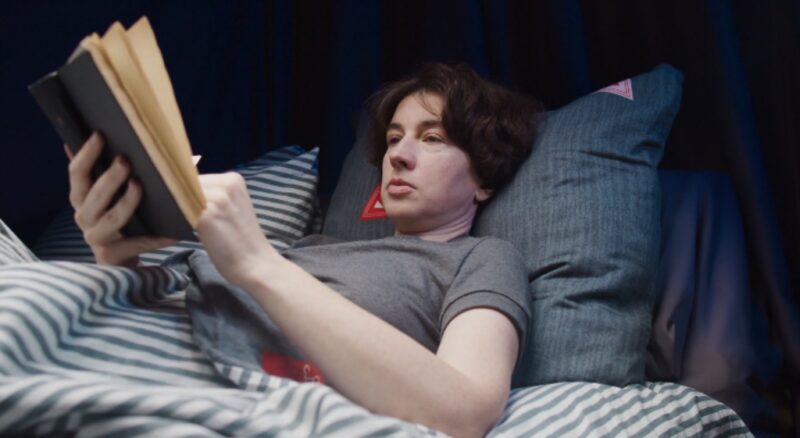
Beyond grand themes and societal reflections, literature often shines a spotlight on personal, intimate conflicts that shape individual destinies.
The Bildungsroman and Coming-of-Age Conflicts
- The Bildungsroman, or coming-of-age novel, such as “To Kill a Mockingbird” or “Catcher in the Rye,” focuses on the internal and external conflicts of growing up. Themes of identity, societal expectations, and personal growth are central.
- These novels resonate across generations, capturing the universal challenges of adolescence and self-discovery.
Romantic Literature and Conflicts of the Heart
- Romantic novels, from classics like “Pride and Prejudice” to modern romances, center around the conflicts of love, societal norms, and personal desires.
- These stories, while centered on relationships, often delve deep into personal dilemmas, societal expectations, and the complexities of human emotions.
FAQs
Why is conflict considered essential in storytelling?
Conflict is essential in storytelling because it introduces challenges and obstacles that characters must face and overcome. This creates tension, drives the narrative forward, and engages the reader or audience. Without conflict, a story would lack direction and purpose, making it less compelling.
Are there stories without any form of conflict?
While the vast majority of stories contain some form of conflict, some narratives focus more on mood, atmosphere, or character introspection without a clear external or internal conflict. However, these are less common and often considered experimental.
How do different cultures approach conflict in their literature?
Different cultures may emphasize different types of conflicts based on their societal values, historical events, and collective experiences. For instance, while Western literature might focus on individualistic struggles, Eastern literature might emphasize communal or familial conflicts. The approach to conflict can offer insights into a culture’s priorities and worldview.
Can a story have too much conflict?
Yes, a story can be overloaded with conflict to the point where it becomes overwhelming or confusing for the reader. Balance is key. While conflict drives the narrative, the story needs to have moments of respite and reflection to give the reader a chance to process events and connect with the characters.
How has the nature of conflict in literature evolved in the digital age?
With the advent of the digital age, new forms of conflict have emerged in literature. Themes like the impact of social media on self-worth, the challenges of digital privacy, and the ethical implications of advanced technology are now being explored. The digital age has introduced a new landscape of conflicts that reflect contemporary challenges.
Summary
Conflicts, in all their varied forms, are the pillars upon which stories are built. They challenge characters, engage readers, and drive narratives forward. By understanding the intricacies of conflict, we can better appreciate the art of storytelling and the myriad ways in which it reflects and shapes our understanding of the world. Whether you’re crafting your tale or losing yourself in someone else’s, remember the pivotal role of conflict. It’s the heartbeat of every story.



